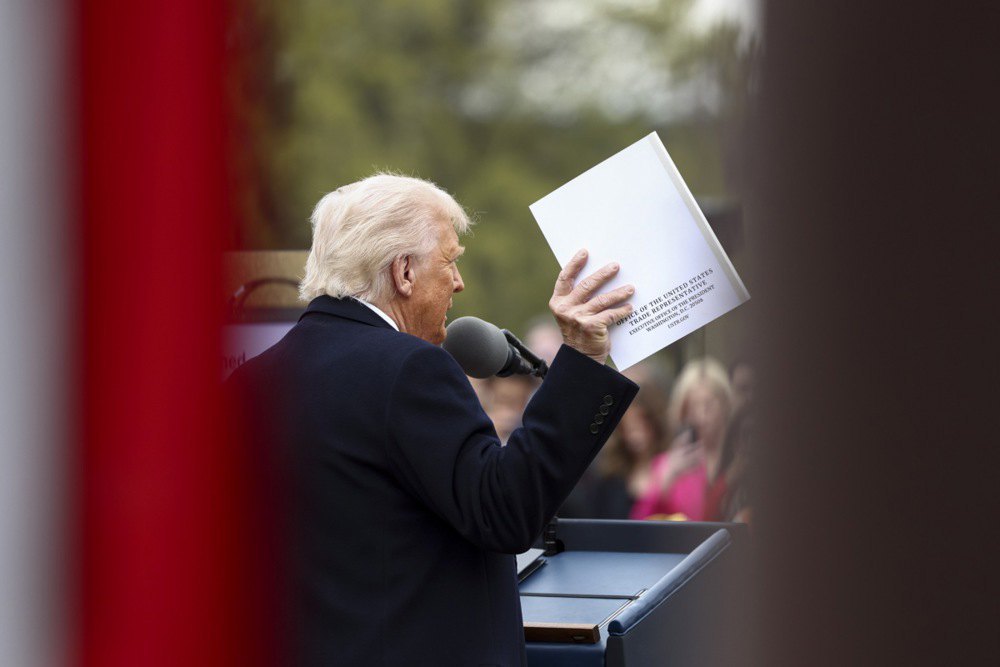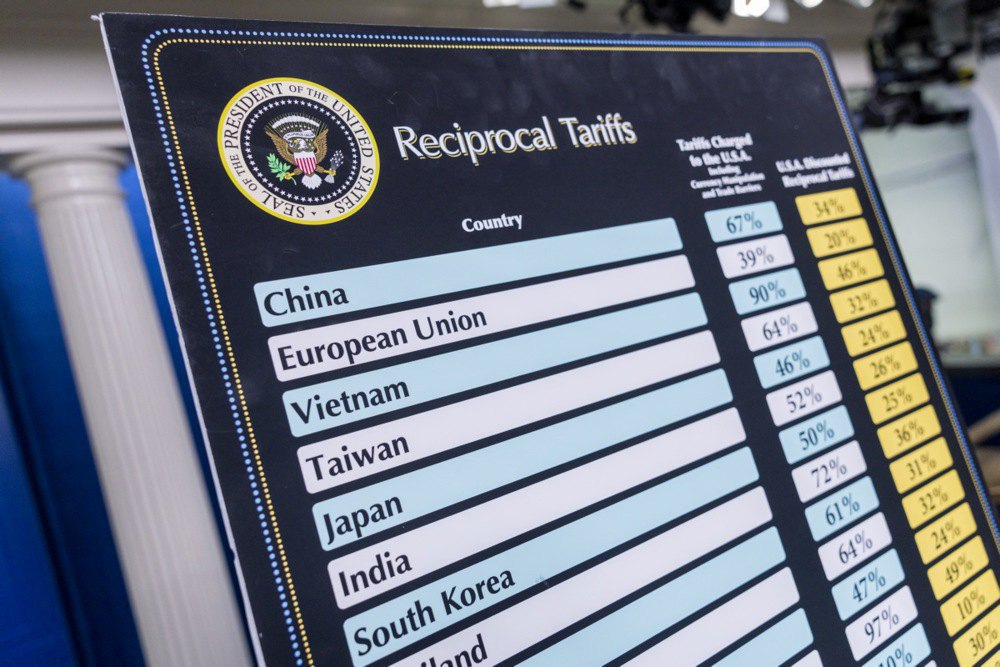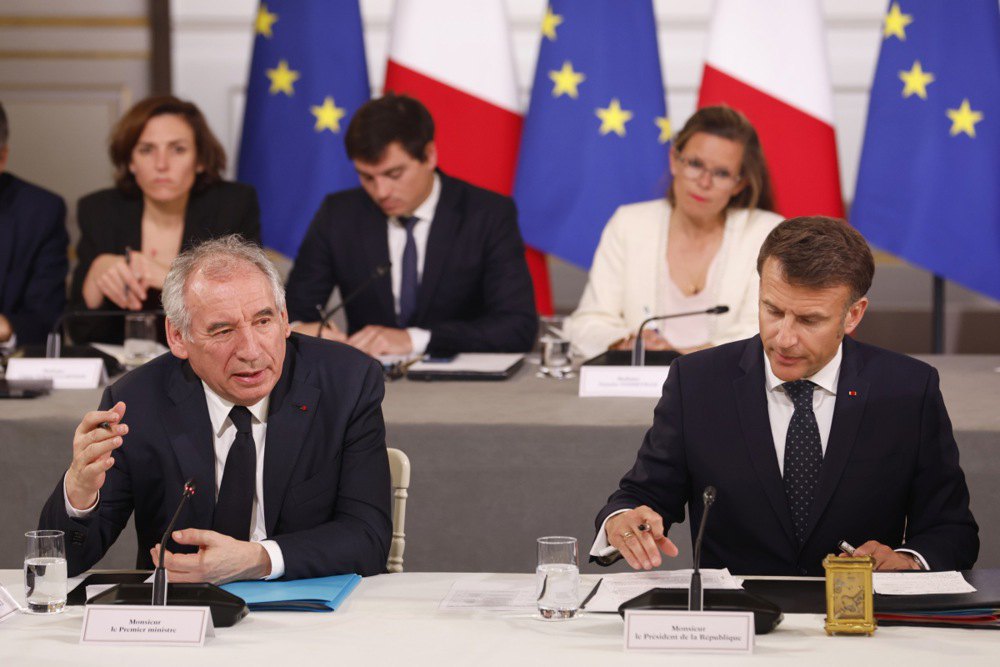
Instead, Donald Trump has used the location to launch a trade war that could end the era of globalisation, at least in its current form.
New US tariff policy
The general tariff is 10% on all imports. Including Ukrainian imports. ‘Reciprocal duties’ - from 10% to 50% for 60 countries with which the US has the largest trade deficit.
In particular:EU countries - 20%.China - 34% in addition to the existing 20%, 54% in totalUnited Kingdom - 10%Japan - 24% of the totalIndia - 26%Moldova - 31%.
Mexico and Canada have been spared from the new tariffs, but they will be subject to a 25% duty on goods covered by the 2020 free trade agreement.
-----
Russia, Belarus, Cuba, and North Korea, which, according to the White House, had previously been subject to ‘extremely high tariffs’ due to sanctions, have avoided the duties. At the same time, in 2024, trade between the United States and Russia amounted to about $3.5 billion, of which $3 billion was imported from Russia. The United States buys uranium, platinum, oil and oil products, ferrous metals, aluminium and titanium from Russia.
Imports of critical commodities (gold, copper, rare earth elements), as well as semiconductors, lumber and medicines, will not be subject to duties.
What are the reasons for the introduction of duties?
The obvious reason is to reduce the US trade deficit, which reached $1.1 trillion in 2024. During the election campaign, Donald Trump constantly said that he would correct the ‘injustice’ that the world profits from trade with the United States.
Tariffs on a number of countries are also part of the confrontation between the US and China. For example, Mexico, which had previously been hit by Trump's tariff strike, has since his first term turned into a production site for Chinese companies that have moved production there in an effort to avoid US customs restrictions. According to the WSJ, thanks to Chinese business, Mexico has overtaken China to become America's largest trading partner with a trade turnover of $840 billion in 2024.
At the same time, the US trade deficit with Mexico increased from $78 billion in 2018 to $172 billion in 2024.
Another reason is that, according to Trump's logic, duties should force companies to move production to the US and create new jobs in America.

When will the duties take effect?
The basic 10% duty will take effect at 12:01 am Washington time on Saturday 5 April. Higher ‘reciprocal tariffs’ will be applied from 12:01 am on Thursday 9 April.
Also, starting from 3 April, the US will impose a 25% duty on imports of cars and car parts.
How did the Trump administration calculate the duties?
The White House Council of Economic Advisers explained that the announced ‘reciprocal duties’ for 60 countries were calculated as follows: they calculated the amount of duties and non-tariff barriers that other countries imposed on American goods and divided them in half.
Instead, James Surowiecki, editor of The Yale Review and author of a number of economic bestsellers, suggested that the Trump administration used a fairly simple calculation: the country's trade deficit divided by its exports to the United States, multiplied by 1/2.
This is truly amazing. The Deputy White House Press Secretary is claiming that I'm wrong, and that the "tariff rates" on Trump's chart were calculated by "literally" measuring every country's tariffs and non-tariff trade barriers.
— James Surowiecki (@JamesSurowiecki) April 3, 2025
To prove it, he screenshots the formula the USTR… pic.twitter.com/g75FreEPbv
Who has suffered the most from Trump's decisions?
Asian ‘global factories’ are among the main victims: China (54% of duties), Cambodia (49%), Laos (48%), Vietnam (46%), and Sri Lanka (44%).
The poorest countries in the world, including the Democratic Republic of the Congo (11%), Mozambique (16%), Malawi (18%), Syria (41%), and Madagascar (47%), are also under the US tariff attack.
Myanmar, which has been suffering from a civil war since 2021 and was hit by a devastating earthquake on 28 March this year, received a duty of 44%.
Closest US allies are in the crosshairs
The UK and Australia were the least affected, with only 10%. Exports to the US from EU countries will now be subject to a 20% duty.
Other close US allies were less fortunate: Taiwan - 32%, South Korea - 25%, Japan - 24%.
Such an unfriendly step will undoubtedly not go unanswered. Although representatives of the governments of South Korea and Japan have stated that they will not impose retaliatory duties, both countries have already begun consultations with China for possible cooperation in the context of US duties. Just a year ago, it was hard to imagine that two of the US's closest allies in the region would coordinate their actions with Washington's strategic rival. It is possible that the EU and China will also come closer together in the wake of Donald Trump's decisions.

Duties on uninhabited islands
Dozens of islands, sparsely populated and generally uninhabited, were hit by the tariff.
In particular, Trump imposed a 50% duty on exports from the French overseas territory of Saint Pierre and Miquelon. The population of the islands as of 2022 is 5,819 people, and fish is almost the only export item. The main source of income for the territory is tourism and French subsidies. In 2023, Saint Pierre and Miquelon exported goods to the United States totalling $54.4 thousand.
A 29% duty was imposed on the Australian island of Norfolk, whose total annual exports are less than 1 million per year and whose main trading partner is Europe, and which exported 200 thousand worth of goods to the United States. The island's population is 2188 people.
‘The last time I looked (at the map), Norfolk Island was part of Australia,’ said Australian Prime Minister Anthony Albanese, noting that the separate, higher tariff ’was a bit unexpected and a bit surprising.
Two other Australian outer territories, the Herd and Macdonald Islands, received a 10% duty. Both islands are uninhabited.
Some Ukrainian experts have suggested that the duties on such territories were introduced to prevent their use as offshore zones. However, it is unclear why the duties for one Australian island are 29% and for the other 10%.
What are the implications for the US and the rest of the world?
French Prime Minister Francois Bayrou called Donald Trump's decision a ‘disaster’ for the world.

If the US administration does not revise its customs policy, it will lead to a recession in the US and global economy, JPMorgan analysts said in a note to investors.
The duties will also raise taxes for Americans by $660 billion a year and lead to a sharp rise in prices. On average, the duties will cost the average American household $5,000 a year.
‘The impact on inflation will be significant,’ JPMorgan analysts said. ’We view the full implementation of this policy as a significant macroeconomic shock.
If other countries retaliate (as China, the UK and the EU have promised to do), the global economy will slow down even further.
Meanwhile, according to Reuters, gold hit a new price record just above $3,160 an ounce, indicating that investors are trying to protect themselves from a possible crisis with a safe haven. In contrast, oil prices fell by more than 6%, reacting to the coming recession.
US stock exchanges also reacted negatively to the duties. The S&P 500 fell by 3.4% (41% of S&P 500 companies' revenues come from abroad), and the Nasdaq Composite by 4.6%. Among the worst hit was Apple, which lost more than $250 billion in market value. The dollar fell by 2.4% against a basket of competitors.
Donald Trump, on the other hand, stated that ‘the operation is over’ and the patient (the US economy) ‘survived and is recovering’.
What are the consequences for Ukraine?
According to the Minister of Economy of Ukraine, Yuliya Svyrydenko, ‘the situation is difficult, but not critical’.

Last year, Ukraine's exports to the US totalled $874 million, of which $363 million was for pig iron and another $112 million for pipes.
In return, the country bought $3.4 billion worth of goods from the US. Ukrainian duties on American goods are quite low: the rate for cars is 10%, and for coal and oil - 0%.
However, we may eventually feel the long-term effects of the global trade war: a slowdown in the EU, UK and Japan may affect our partners' determination to support our country. Economic problems are also strengthening the electoral chances of European right-wing populists, many of whom are questioning the feasibility of supporting Ukraine.
Could Donald Trump reconsider the tariffs?
Of course, yes. Donald Trump has repeatedly demonstrated that he is able to change his attitude to a particular issue in a matter of days. Treasury Secretary Scott Bessent said that the US would give its trading partners time to settle. However, he warned them against retaliatory steps: ‘My advice to every country right now is not to retaliate, not to sit back and take it in. Let's see how it goes. If you retaliate, there will be an escalation. If you don't retaliate, this will be the highest grade.’







